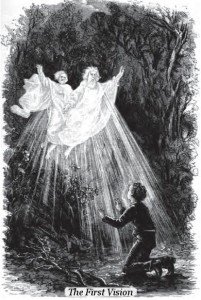Related Posts: The Premortal Life; Blacks and the Priesthood; Grace; Justification; Why Covenants?; The Fall of Man: The Doctrine; Omniscience; Faith and Charity; Justification and Salvation
The elect are those whom God has chosen: “but for the elect’s sake, whom he hath chosen” (Mark 13:20). The LDS Bible Dictionary points out that election “is both on a national and an individual basis” (“Election,” Bible Dictionary).
National (group) election
The national basis is that God has elected his church to be holy, and that Israel will be his holy people. A good place to begin is Ephesians chapter 1:
PAUL, an apostle of Jesus Christ by the will of God, to the saints which are at Ephesus, and to the faithful in Christ Jesus: Grace be to you, and peace, from God our Father, and from the Lord Jesus Christ. Blessed be the God and Father of our Lord Jesus Christ, who hath blessed us with all spiritual blessings in heavenly places in Christ: According as he hath chosen us in him before the foundation of the world, that we should be holy and without blame before him in love: Having predestinated us unto the adoption of children by Jesus Christ to himself, according to the good pleasure of his will, To the praise of the glory of his grace, wherein he hath made us accepted in the beloved. In whom we have redemption through his blood, the forgiveness of sins, according to the riches of his grace. (Eph. 1:1-7)


